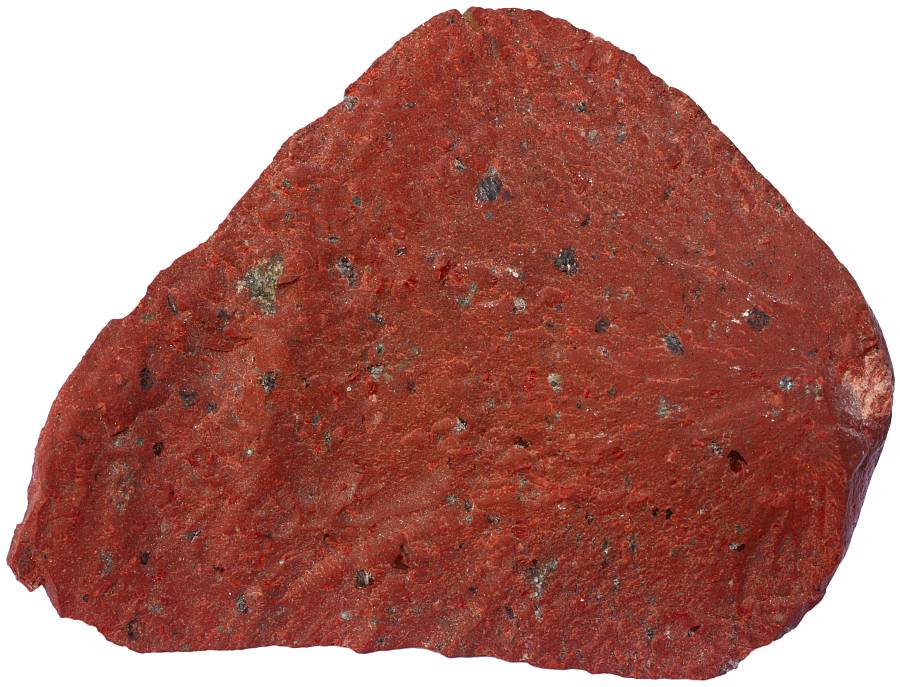The word “hydrothermal” is often mentioned in geological texts. Lots of things can be hydrothermal — hydrothermal vent, alteration, circulation, deposits, veins, metamorphism, mineralization. What is this thing? Are they all related phenomena and how important this topic really is? First of all, it really is important because many mineral deposits that are essential resources to mankind are the direct results of these processes. Think about gold, copper, tin, lead, silver, etc. They are mined from hydrothermally altered rocks or from mineral veins where they formed by the crystallization from hot aqueous solutions.

Epidote vein in a granite (unakite). Epidote is a hydrothermal mineral. There is a crack in the middle which allowed the fluids to flow and alter the rock. Arendal, Norway. Width of sample 11 cm.
What is needed to form these valuable deposits?
1. Water
We need water which is a solvent and a transporter of dissolved chemical compounds. Where is this water coming from? It could be water that was expelled from crystallizing magma. It could be rain water that became ground water. It could be seawater that intruded hot magmatic rocks near the mid-ocean ridges. It could be water that was part of hydrous minerals that were metamorphosed to anhydrous phases which liberated the water into the pore space of rocks.
2. Heat
Why do we need it? Because chemical reactions take place much more easily if the temperature is higher. And we need the water to move. As water heats up its density is lower and it rises. Rising water will be replaced by colder water that sinks (hydrothermal circulation). This way water circulates and chemically attacks (hydrothermal alteration or metamorphism) the rocks through which it moves. What provides the heat? It is usually magma in large intrusions.
3. Source material
Rich hydrothermal deposits contain material that had to come from somewhere. It is often magma again which provides reactive fluid that is rich in many chemical elements that were not incorporated into the crystal structure of most common igneous minerals. Chemical elements may also be liberated from the rocks that were altered by the fluid.
4. Fractures
The Earth’s crust is made of rocks. It is not that easy to just go through a solid rock. Thus, we need fractures, faults, or just permeable rocks which allow the fluids to migrate. Therefore, we should not expect to find hydrothermal deposits everywhere. It takes lots of work to find weaknesses in the crust, which might have been used by these hot fluids.
5. Deposition place
Most hydrothermal minerals are found in rocks through which hot fluids migrated. Epidote and muscovite are common silicate minerals that replaced the original minerals in the rocks. Hydrothermal deposits can be found in shallower cracks where conditions were right (lower temperature and pressure) for the deposition to take place. Such deposits are called hydrothermal veins. They usually contain quartz along with ore minerals because fluids usually contain lots of dissolved silica. Gold, for example, is often found in veins with quartz. But hydrothermal deposits may also form on the ocean bottom. These openings through which hot mineral-rich water enters the sea are called hydrothermal vents (black and white smokers). Hydrothermal deposits may also form subaerally in volcanically active areas.
Hydrothermal mineralization is the precipitation of minerals out of the hot fluid. What type of minerals can we expect to find? Really very many and different type, but sulfides tend to be the most characteristic among those that are valuable to us. Pyrite and marcasite (iron sulfides but not very good iron ores because we have better alternatives), acanthite (silver), cinnabar (mercury), chalcopyrite (copper), molybdenite (molybdenum), sphalerite (zinc), galenite (lead), etc.
Several rock types are the results of hydrothermal alteration. Skarn is an altered carbonate rock that contains lots of calc-silicate minerals (silicates that contains calcium like wollastonite, diopside, and some garnets). Greisen is an altered granitic rock that contains lots of mica and many uncommon minerals. Pegmatite is a coarse-grained rock with unusual mineralogy that represents the latest magma to crystallize which is more hydrous and less viscous than the granitic parent magma. Pegmatites are usually not considered to be hydrothermal sensu stricto, but they are closely associated and form the link between magma intrusion and migrating fluids.
Hydrothermal minerals do not form the bulk of the Earth’s crust. You will not see them everywhere. But they are extremely important because they are the natural concentrates of many less abundant chemical elements. Large number of important but less known minerals crystallize out of hydrothermal fluids. Crystals that grow in cracks often have free room to do so. Therefore, the most beautiful specimens with perfect crystal faces usually come from hydrothermal veins and are highly sought after by rockhounds.
Silicified umber in Cyprus. It is a rock type associated with black smokers on the ocean floor. The initially light-weight deposit was quickly hydrothermally altered which explains why it contains so much silica.

Volcanic rock (rhyolite) from the Proterozoic. The original composition has been strongly altered. K-feldspar is mostly replaced by albite and minerals like xenotime and fluorite have been introduced by the hot fluids. The gray spots are quartz phenocrysts in a fine-grained matrix of mostly K-feldspar, albite, and quartz. Width of sample 9 cm.
Leave a Reply